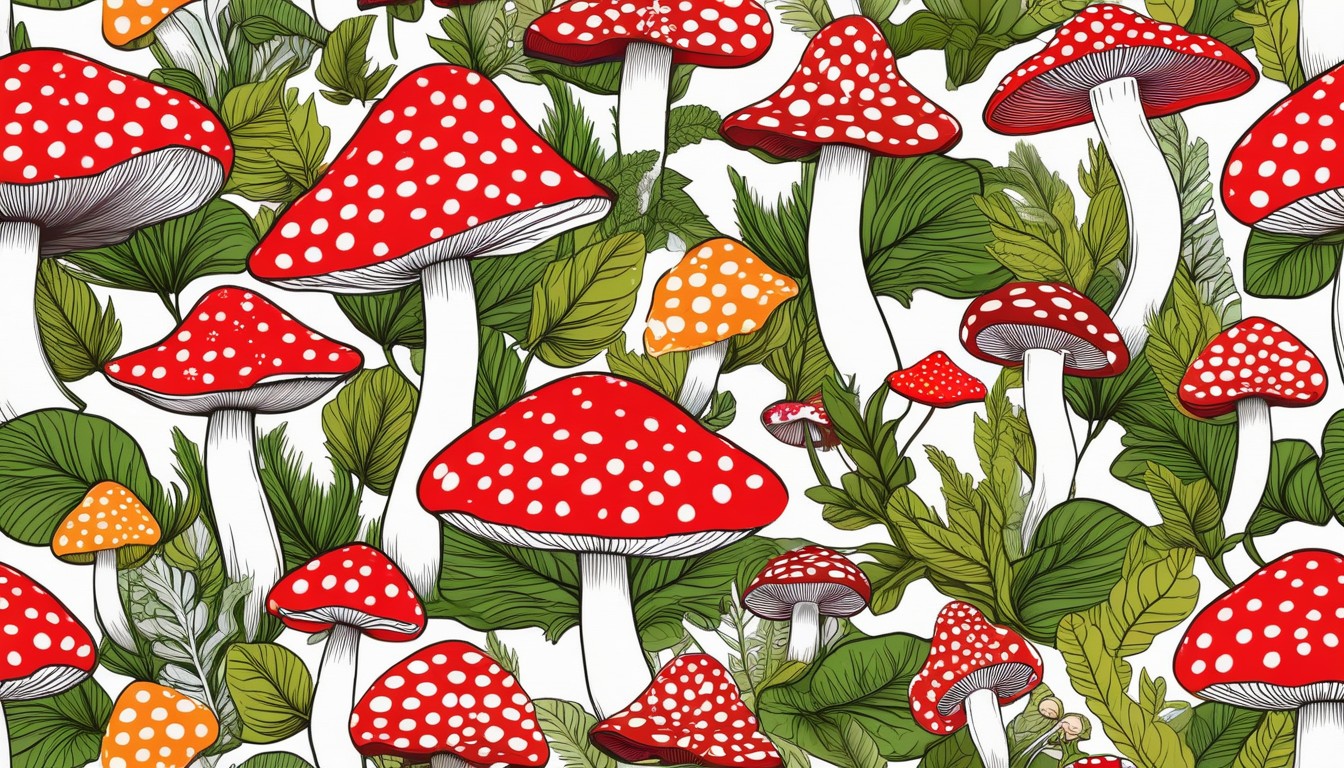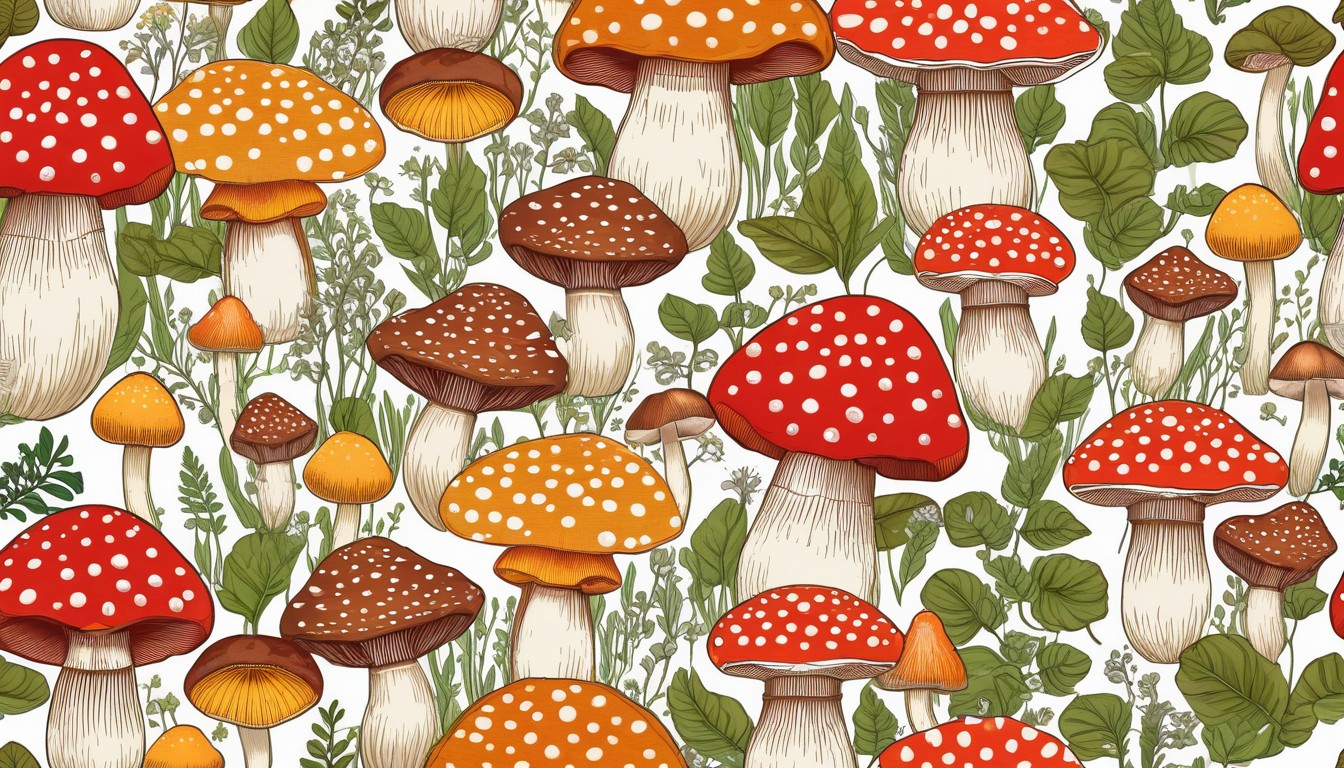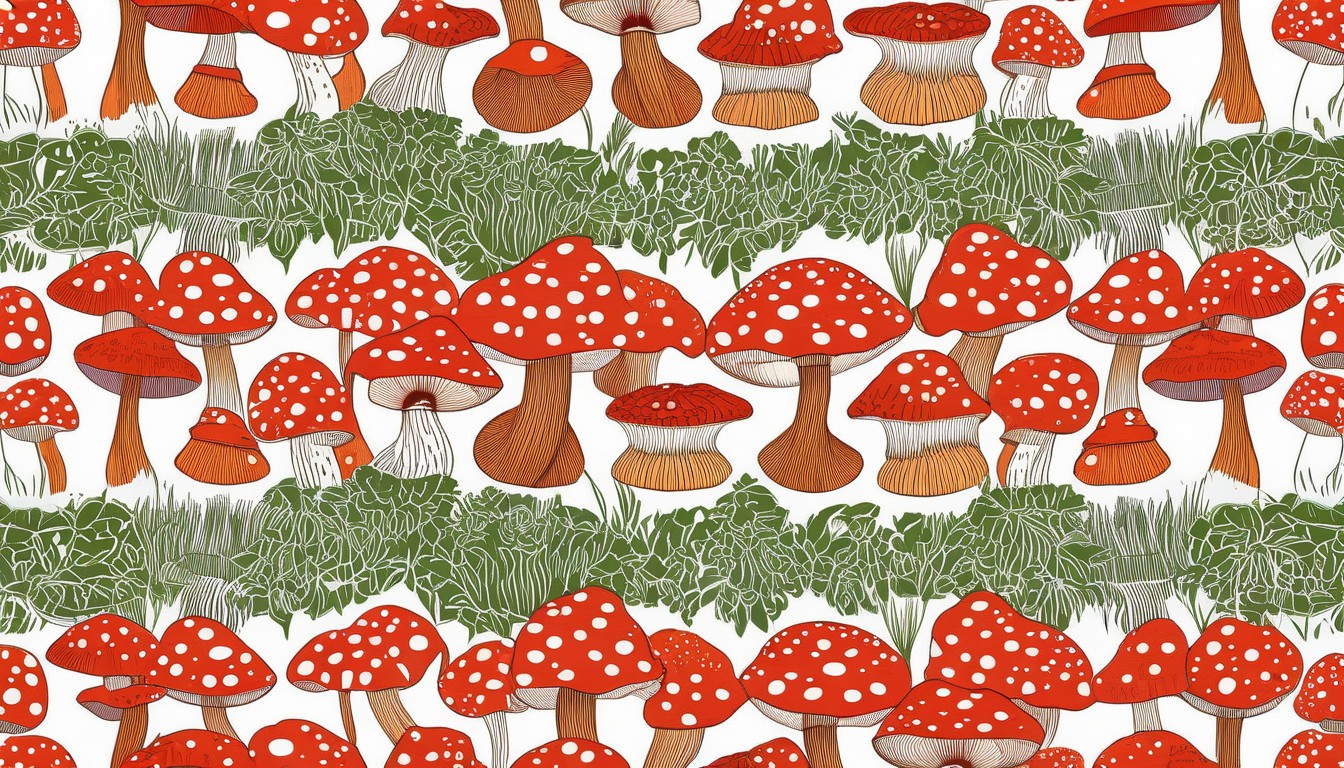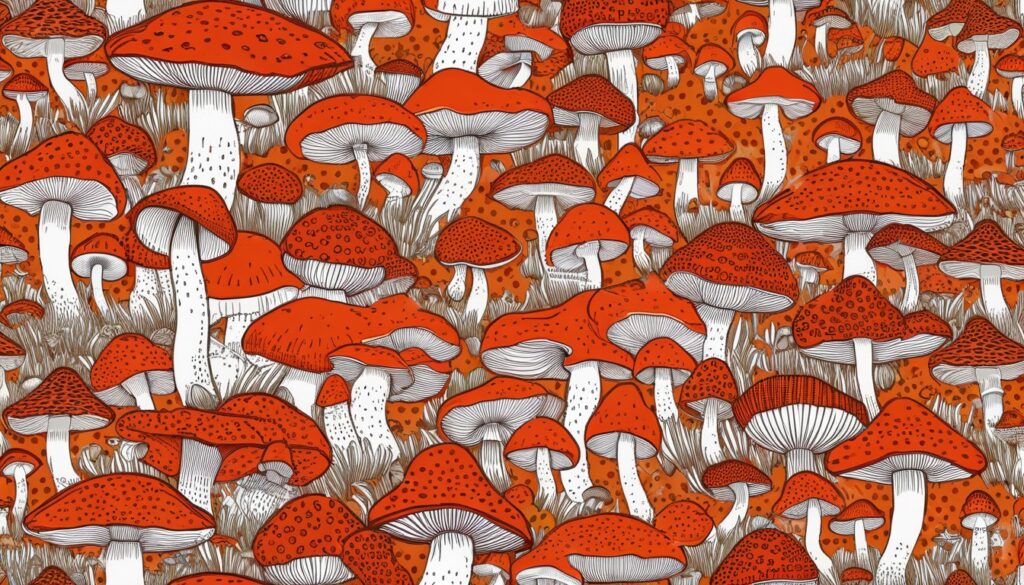As the world becomes more conscious of the environmental impact of the textile industry, innovative solutions are emerging to create sustainable and eco-friendly fabrics. Mushroom fabric is one such solution, offering a unique blend of sustainability, functionality, and style that is capturing the attention of green-conscious designers and consumers.
Mushroom fabric, also known as mycelium textile, is created from the roots of mushrooms, called mycelium, which can grow and bind with organic materials to create a strong and durable material that can be used for a variety of purposes. This sustainable fabric is not only biodegradable but also has a low carbon footprint, making it a great choice for environmentally-friendly products.
Key Takeaways:
- Mushroom fabric is a new eco-friendly textile made from mycelium, the roots of mushrooms.
- It is a sustainable and biodegradable material that has a low carbon footprint, making it perfect for industries aiming for a more sustainable approach.
- Mycelium textile offers a unique blend of sustainability, functionality, and style that is capturing the attention of green-conscious designers.
- This innovative technology can be used in various industries, including interior design, sustainable fashion, and product manufacturing.
- Mushroom fabric has great potential to revolutionize the textile industry and contribute to a more sustainable future.
What is Fabric with Mushrooms?
Fabric with mushrooms, also known as mycelium textile, is a sustainable material made from the root structure of mushrooms. The process involves growing mycelium on a substrate made of agricultural waste or other sustainable materials. Once the mycelium has grown and taken the desired shape, it is harvested and processed to form a sturdy, yet flexible material that can be used for various applications.
Mushroom fabric is an eco-friendly alternative to synthetic materials in that it is fully biodegradable and has a low carbon footprint. The production process also requires minimal resources and produces little to no waste.
Moreover, the resulting textile is both durable and versatile, with the ability to be molded into various shapes and sizes. It also has unique texture and visual appeal, making it an attractive choice for designers in the fashion and home industries.
Benefits of Using Fabric With Mushrooms
The use of mushroom fabric comes with a range of benefits. Firstly, it is a highly eco-friendly material, as it is produced using sustainable materials and practices. By opting for mushroom fabric, you are choosing a biodegradable and compostable material that leaves little environmental footprint. Moreover, mushroom fabric has a low carbon footprint and is not harmful to the planet.
In addition to its eco-friendly benefits, fabric with mushrooms is also a sustainable material. The use of mycelium to create the textile means that it is renewable and can be produced faster than conventional textiles. This makes it an ideal choice for creators looking to implement sustainable practices in their designs.
Lastly, mushroom fabric is a great choice for those looking to use green textiles in their designs. Its unique texture and natural appeal make it a versatile material suitable for a range of applications. Furthermore, its durability and longevity mean that it is a long-lasting textile, reducing the need for replacements and thus promoting a more sustainable supply chain.
The Science Behind Mushroom Fabric
Mushroom fabric’s innovative composition comes from the role of mycelium, the vegetative part of fungi, in its creation. This fungal network of threads grows on various substrates until it forms a solid mass, which can be used as a textile material. Mycelium’s growth process involves the breakdown of organic matter, making it a sustainable and eco-friendly material option for textile innovation.
“Mycelium acts as a natural adhesive and can replace synthetic materials in several applications. Many textiles created from mycelium are as durable as leather.” – Eric Klarenbeek, Dutch designer.
The technology behind mushroom fabric involves the control of variables such as temperature, humidity, and food substrate to ensure the optimal growth of mycelium. Some companies use proprietary methods of processing mycelium into a textile form, while others promote an open-source mission, allowing for collaboration and experimentation in the field.
Applications of Mushroom Fabric

Mushroom fabric has been gaining popularity in various industries due to its eco-friendliness and versatility. Here are some of the most exciting applications of this sustainable textile:
Interior Design
Mushroom fabric can be used in a wide range of interior design applications, including upholstery, curtains, and bed linens. Its unique texture and natural color palette make it a popular choice for eco-conscious designers who want to create inviting, sustainable spaces.
Sustainable Fashion
Mushroom fabric is also gaining traction in the fashion industry, where it is being used to create a variety of sustainable clothing and accessory items. From stylish bags and wallets to comfortable, stylish clothing, mushroom fabric is proving to be an exciting and innovative new material for fashion designers.
Product Manufacturing
Thanks to its durable and sustainable properties, mushroom fabric is an ideal material for use in a range of product manufacturing applications. From furniture to car seats and beyond, this versatile textile offers excellent durability, while also being fully biodegradable and eco-friendly.
How Mushroom Fabric Compares to Other Sustainable Textiles

As sustainability becomes an increasingly important consideration for creators and consumers, the use of eco-friendly textiles has become a popular choice. However, with so many sustainable material options available in the market, it can be difficult to decide which one to choose. This section compares mushroom fabric with other sustainable textiles, highlighting its unique properties, advantages, and potential drawbacks.
Mushroom Fabric vs. Organic Cotton
Organic cotton, known for its softness and versatility, has been a popular choice among eco-friendly creators for years. However, compared to mushroom fabric, it requires a significant amount of water and takes longer to biodegrade. Additionally, mushroom fabric has better insulating properties and can keep you warmer in colder temperatures making it a good choice for outdoor wear.
Mushroom Fabric vs. Hemp
Like mushroom fabric, hemp is a highly sustainable material and requires minimal resources to produce. However, it can be rougher to the touch and less comfortable to wear than mushroom fabric. Additionally, some hemp production processes can cause environmental damage and depletion of natural resources.
Mushroom Fabric vs. Recycled Polyester
Recycled polyester is made from recycled materials such as plastic bottles and requires less water and energy to produce. However, it still contributes to the accumulation of microplastics in the environment. On the other hand, mushroom fabric is completely biodegradable and has no adverse environmental effects.
Mushroom Fabric vs. Tencel
Tencel is a sustainable fabric option made from eucalyptus trees that requires minimal resources and energy to produce. However, it can be more expensive than mushroom fabric and requires more energy in the production process. Mushroom fabric is a more affordable option and has better insulating properties.
|
Mushroom Fabric |
Organic Cotton |
Hemp |
Recycled Polyester |
Tencel | |
|---|---|---|---|---|---|
|
Water Usage |
Minimal water usage |
Significant water usage |
Minimal water usage |
Requires less water and energy, but still contributes to microplastic accumulation |
Minimal water usage |
|
Biodegradability |
Completely biodegradable |
Longer time to biodegrade |
Biodegradable, but some production processes cause environmental damage |
Partially biodegradable, contributes to microplastic accumulation |
Biodegradable |
|
Comfort |
Soft and comfortable to wear |
Soft and comfortable to wear |
Can be rougher to the touch and less comfortable to wear |
Soft and comfortable to wear |
Soft and comfortable to wear |
|
Insulation |
Better insulating properties |
Standard insulating properties |
Standard insulating properties |
Standard insulating properties |
Less insulating properties |
|
Price |
Affordable |
Moderate to high cost |
Can be expensive |
Standard to affordable |
Can be expensive |
Overall, mushroom fabric compares favorably with other sustainable textiles in terms of its eco-friendliness, affordability, insulation, and biodegradability. Its unique composition and properties make it a versatile and sustainable option for creators looking to make a positive impact on the environment while still creating fashionable and functional products.
Sustainable Practices in Mushroom Fabric Production

Creating fabric with mushrooms is a sustainable and eco-conscious process that follows various production methods to minimize environmental impact. Manufacturers employ minimal resource use to conserve energy and reduce waste, ensuring that the process is as eco-friendly as possible.
Waste reduction measures include repurposing byproducts from mushroom farming, such as agricultural waste, using them as a substrate for cultivating mycelium. The production process avoids toxic chemical inputs, making mushroom fabric an excellent sustainable textile option for environmentally conscious individuals.
Raw materials are sourced responsibly, and production is optimized for low energy consumption and reduced water usage. Every stage of the process is designed to create a low carbon footprint.
The result of these practices is an eco-friendly and sustainably manufactured textile that is part of the shift towards a greener future.
Care and Durability of Mushroom Fabric
When it comes to taking care of your mushroom fabric, it’s important to follow some simple guidelines to ensure it remains in great condition. Here are some tips for fabric maintenance and maximizing the lifespan of your long-lasting textile:
- Handle with care: While mushroom fabric can be durable, it’s essential to avoid excessive pulling or tugging during use to avoid tears or strains.
- Cleaning instructions: Cleaning mushroom fabric is easy, as it can be wiped clean with a damp cloth and mild soap. Avoid using harsh chemicals or brushes, as they can damage the delicate texture of the fabric.
- Drying: After cleaning, allow the fabric to air-dry in a well-ventilated area. Avoid drying it under bright sunlight or using a clothes dryer, as this can cause shrinkage or damage.
- Storage: Store your mushroom fabric in a cool, dry place away from direct sunlight. To protect it from dust and dirt, keep it in a covered container or bag.
By following these simple care tips, you can ensure your mushroom fabric maintains its unique texture and quality over time, and maximizes its long-lasting textile properties.
Where to Buy Eco-Friendly Fabric with Mushroom Designs

If you’re looking to incorporate sustainable and stylish fabric with mushroom designs into your creative projects, several eco-friendly suppliers offer a wide range of options. One of the most reputable eco-friendly fabric suppliers with mushroom designs is Eco Textile Studio, an online platform that offers a variety of hand-dyed and organic fabrics made with natural dyes and fibers.
You can also check out mushroom fabrics at the online store by Bolt Threads, which is known for mushroom leather and silk products as well. {em}The Mushroom Design Company{/em} is another great option that offers various textiles made with mycelium and other natural materials sourced locally and ethically.
In addition to these dedicated eco-friendly suppliers, many mainstream fabric stores now carry sustainable options, including mushroom fabric. Be sure to check out offerings from brands such as Hemp Traders, Organic Cotton Plus, and NearSea Naturals.
Creative Ideas for Using Mushroom Fabric
Mushroom fabric is a versatile and sustainable material that can be used in a variety of projects. Here are some creative ideas to get your design inspiration flowing:
Home Decor
- Create unique pillowcases or cushion covers with mushroom fabric.
- Add a cozy touch to your space by covering a lampshade with mushroom fabric.
- Design curtains or blinds with mushroom fabric for a statement piece in any room.
- Make tablecloths or table runners using mushroom fabric for a touch of natural elegance in your dining area.
Fashion
- Sew dresses, skirts, or pants from mushroom fabric for a natural and sustainable addition to your wardrobe.
- Create one-of-a-kind bags, clutches, or wallets with mushroom fabric for a stylish accessory.
- Design unique scarves, hats, or headbands using mushroom fabric for a natural twist on fashionable accessories.
Product Design
- Design sustainable furniture or home decor pieces with mushroom fabric for a unique and eco-friendly twist.
- Create custom-made phone cases or laptop sleeves with mushroom fabric for a stylish accessory with a sustainable twist.
- Make reusable shopping bags or grocery totes using mushroom fabric for a sustainable solution to plastic bags.
These are just some of the creative ideas for using mushroom fabric. With its versatility, sustainability, and unique texture, the possibilities are endless.
The Future of Mushroom Fabric
The use of mushroom fabric is a promising development in the textile industry, with potential to revolutionize sustainable materials in the future. As green consciousness continues to grow, mushroom fabric presents many advantages over traditional textiles, including biodegradability, low carbon footprint, and eco-friendly production processes.
With sustainable fashion on the rise, mushroom fabric could play a major role in shaping the future of textiles, and contribute to a more environmentally friendly industry overall. As research and technology continue to advance, we can expect to see more advancements in mushroom fabric production, leading to greater availability and affordability for creators and consumers alike.
As the demand for sustainable materials increases, it is likely that we will see more experimentation with unique materials like mushroom fabric, and a shift towards responsible and eco-conscious manufacturing practices. With advancements in technology and increased awareness about environmental impact, the future of mushroom fabric and sustainable materials in the textile industry is looking bright.
Conclusion
Overall, fabric with mushrooms is an exciting and innovative addition to the world of eco-friendly fabrics. Its unique composition, sustainable production methods, and numerous benefits make it a promising option for a variety of applications. Whether you’re a designer, manufacturer, or simply looking for more sustainable textile options, mushroom fabric is definitely worth considering.
So if you’re looking for a versatile, eco-friendly fabric that combines style and sustainability, look no further than fabric with mushrooms. With its low environmental impact, durability, and unique design possibilities, it’s a sustainable textile that’s sure to become increasingly popular in the years to come.
Thank you for reading and we hope this article has provided you with valuable information about this sustainable textile option.
Keywords: fabric with mushrooms, eco-friendly fabric, sustainable textile
FAQ
What is fabric with mushrooms?
Fabric with mushrooms, also known as mushroom fabric or mycelium textile, is a sustainable material made from the roots of mushrooms, known as mycelium. It is used to create an eco-friendly fabric that is both stylish and environmentally conscious.
What are the benefits of using fabric with mushrooms?
Using fabric with mushrooms offers several benefits. It is eco-friendly, as it is made from natural and renewable materials. It is also biodegradable, meaning it will break down without causing harm to the environment. Additionally, fabric with mushrooms has a low carbon footprint and can potentially contribute to reducing waste in the textile industry.
How does mushroom fabric compare to other sustainable textiles?
Mushroom fabric has unique properties that set it apart from other sustainable textiles. Unlike some other options, it doesn’t require large amounts of water or chemicals to produce. Additionally, mushroom fabric is biodegradable and can offer a more sustainable alternative to traditional materials like cotton or polyester.
How do I care for mushroom fabric?
Caring for mushroom fabric is similar to caring for other textiles. It is recommended to follow the care instructions provided by the manufacturer. In general, it is best to wash mushroom fabric with mild detergent and to avoid using bleach or harsh chemicals. It is also important to avoid excessive heat during drying and ironing to maintain the fabric’s durability.
Where can I buy fabric with mushroom designs?
Fabric with mushroom designs can be purchased from various eco-friendly fabric suppliers and online platforms. It is recommended to search for sustainable fabric brands that prioritize eco-conscious production and offer a wide range of mushroom-inspired designs.
Can mushroom fabric be used in different applications?
Yes, mushroom fabric has versatile applications. It can be used in interior design, such as for upholstery or curtains, as well as in sustainable fashion, including clothing, accessories, and footwear. Mushroom fabric can also be employed in product manufacturing, offering a unique and eco-friendly alternative to traditional textiles.
What does the future hold for mushroom fabric?
The future of mushroom fabric looks promising. As sustainability becomes an increasingly important factor in the textile industry, the demand for eco-friendly materials like mushroom fabric is expected to grow. With ongoing research and innovations, mushroom fabric has the potential to play a significant role in shaping a more sustainable future for the textile industry.

